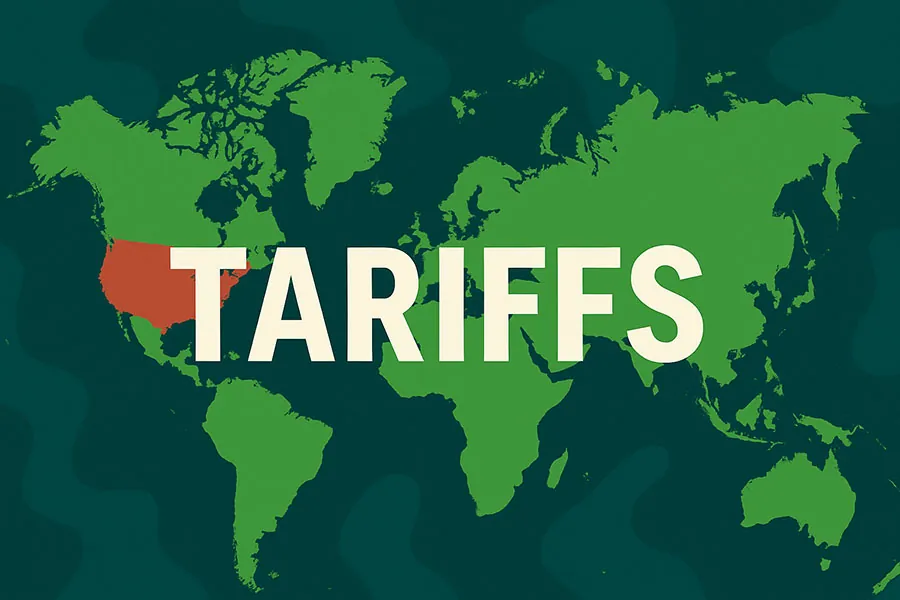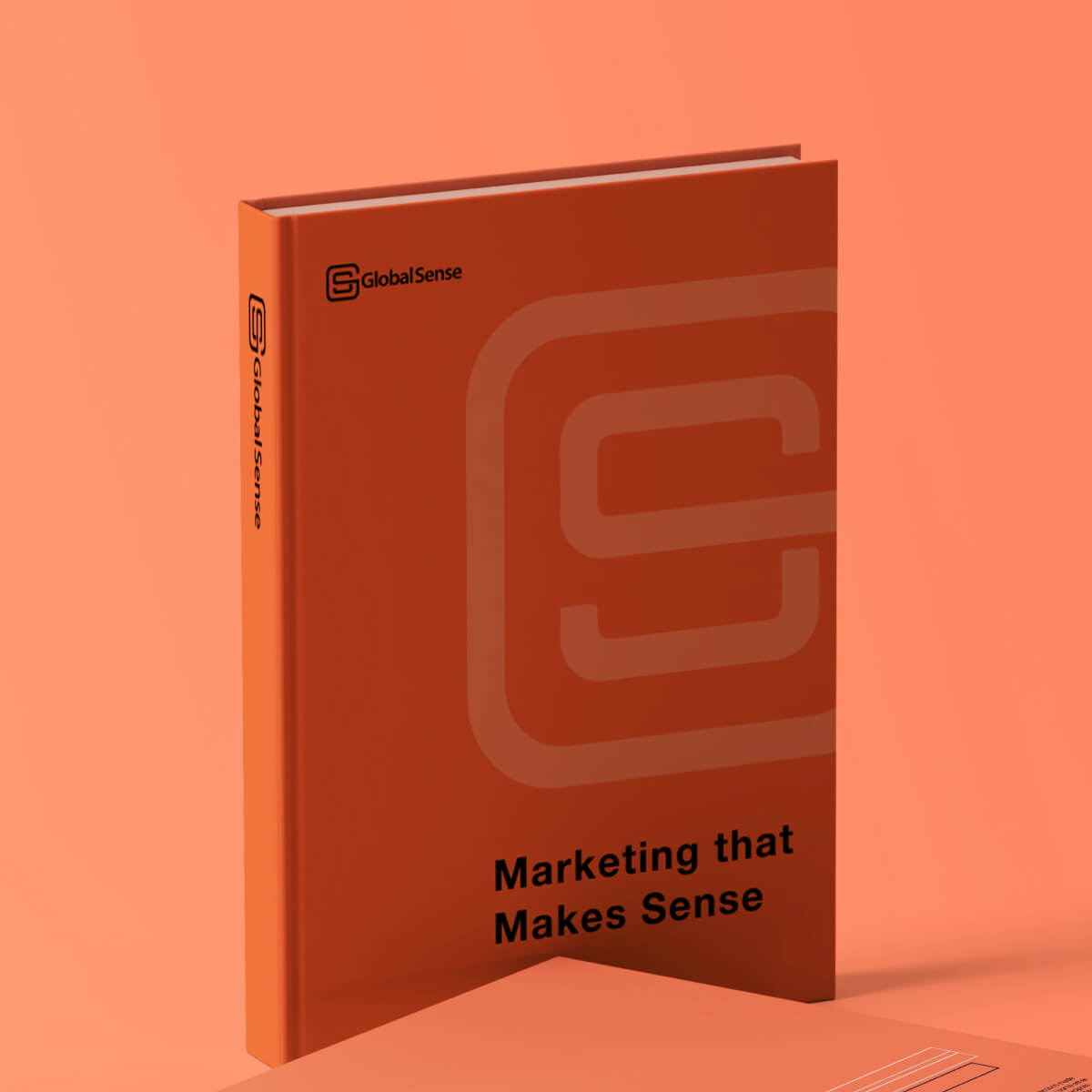Affected by Trump’s Tariffs? Here’s What You Can Do With Your B2B Website


- Global B2B Website Expansion_ Tariffs and New Markets 14:09
Many Taiwanese manufacturers are starting to feel the pressure from Trump’s tariffs. If you’re one of the businesses that has relied on the US market then you might want to think about what your next steps will be. The good news is that there are still plenty of opportunities in markets around the world that don’t have these high tariff barriers. The key lies in effectively retargeting and growing your B2B website to attract business from other regions.
Table of Contents
This article will guide you through the process of growing and adapting your digital presence to capture new business opportunities across the globe with new language versions of your website. I will let you know what to do and the correct way to carry it out so that your business is positioned for success in 2025.
Review Your Current B2B Website First
Before you rush to expand into new markets, it’s crucial to take a step back and honestly evaluate your existing company B2B website. There is no point creating new versions of an old website with outdated contents. You need a strong foundation on which to build your international marketing.
Your current B2B website will be the template for your international expansion, so any weaknesses will only be amplified when you build additional language versions so take this opportunity to honestly evaluate your site and make sure that your digital foundation is solid.
Ask yourself these essential questions about your company B2B website:
- Does your company B2B website feature a blog with high-quality, regularly updated content that showcases your industry expertise?
- Does your company B2B website contain comprehensive information that thoroughly addresses potential customer questions about your products, services, and business practices?
- Has your company B2B website been properly optimized for search engines with appropriate keywords, meta descriptions, alt tags, and a mobile-responsive design?
If you find yourself answering “no” or “not sure” to any of these questions, you should prioritize improving your current website before investing in international expansion. For international visitors, your website IS your company, so if it is not great, they will leave and visit competitors instead.
A modern, well-designed company website with strong content will serve as an excellent foundation for your international versions.
What Not to Do When Expanding Your Company B2B Website Globally
When you’re eager to enter new markets, it can be tempting to take shortcuts. However, these shortcuts usually lead to poor results that can damage your company’s reputation internationally, waste years of your time and end up with you having to start again from scratch.
Here are key things you should avoid:
1.Avoid Automatic Translation Functions
You might be tempted by the speed and low cost of automatic translation tools, but they often produce results that can seriously harm your brand perception. Machine translations frequently miss cultural nuances, industry-specific terminology, and contextual meanings, resulting in content that ranges from slightly awkward to completely nonsensical.
Consider how you feel when you encounter a poorly translated website—it immediately signals a lack of care and professionalism. This is not the impression that you want to give potential customers.
Automatic translations often struggle with:
- Technical terminology specific to your industry
- Idiomatic expressions that don’t translate literally
- Cultural references that may be inappropriate in other contexts
- Proper formatting of numbers, dates, currencies, and measurements
Automatic Translation Breaks The Design
Different languages require different amounts of space on a page. German text, for instance, tends to be 20-30% longer than equivalent English text, while Chinese often requires less space. An automatically translated website frequently suffers from layout issues, with text overflowing containers or appearing too sparse. This unprofessional presentation signals to potential customers that you don’t value quality or attention to detail.
2.Don’t Host Your Company Website in Taiwan for Global Markets
While Google officially states that server location isn’t a direct ranking factor for search results, website speed absolutely is and it significantly impacts both SEO and user experience. When a user in Europe or South America tries to access a company website hosted on servers in Taiwan, they’ll experience noticeable delays in page loading times compared to sites that are hosted closer to the searchers location.
These delays might seem minor to you but research consistently shows that users are incredibly sensitive to load times:
- 53% of mobile users abandon sites that take over 3 seconds to load
- Every 1-second delay in page load time can result in a 7% reduction in conversions
A company B2B website hosted in Taiwan will load more slowly for users on the opposite side of the world, putting you at a significant disadvantage compared to locally-hosted competitors. In markets where you’re already a newcomer, you can’t afford this additional handicap.
At Globalsense we use Google data centers around the world to host our websites. This gives us access to the safest and fastest servers available as well as allowing us to choose from 37 regional locations where we can host your website.
Best Practices for Expanding Your Company B2B Website Internationally
Now that you know what to avoid, let’s focus on the strategies that will help your company website succeed in new international markets:
1.Secure Country-Specific Domains and Hosting
For optimal results in different markets, you should use country-specific domains whenever possible:
| Target Market | Recommended Domain Type | Example |
|---|---|---|
| Taiwan | .com.tw | yourcompany.com.tw |
| Global/English | .com | yourcompany.com |
| Japan | .jp | yourcompany.jp |
| Germany | .de | yourcompany.de |
| United Kingdom | .co.uk | yourcompany.co.uk |
Using the appropriate country code top-level domain (ccTLD) sends a clear signal to both search engines and users that you’re specifically targeting their market. Google’s algorithms consider this a strong indicator when determining which sites to show in local search results.
If you can’t register a country-specific domain due to local presence requirements or other restrictions, create a subdomain instead (e.g., “jp.yourcompany.com” or “de.yourcompany.com”). This alternative is free and still helps with geographic targeting, though it’s not quite as powerful as a dedicated ccTLD.
Along with country-specific domains, consider using local hosting services for your most important markets. This ensures faster load times for users in those regions and can provide additional SEO benefits for local search rankings.
2.Invest in Localized SEO and Targeted Advertising
Working with your marketing agency to develop a country-specific digital strategy is crucial for success. This should include:
- Researching and verifying keywords specific to each target market—don’t assume direct translations of your English keywords will be effective
- Implementing basic SEO optimization for each localized site, including local schema markup
- Running website advertising such as Google Ads campaigns for your highest-priority markets to boost visibility and drive initial traffic
- Adapting your content planning to address local market concerns and questions
Remember that search behaviors and competitive landscapes vary significantly between countries. What works for your Taiwan or US market might not be effective in Europe or Latin America. You’ll need to conduct fresh keyword research and competitor analysis for each new market you enter.
3.Translate Your Blog Content
In 2025, having a regularly updated blog is essential for any successful company website. When expanding internationally, don’t neglect this crucial content:
- Translate your most popular and highest-converting blog articles into the languages of your target markets
- Adapt content to reference local examples, regulations, or concerns when appropriate
- Maintain a consistent publishing schedule in each language
- Consider creating some market-specific content that addresses particular needs or interests in each region
Quality translated content demonstrates your commitment to serving these markets properly and helps build trust with potential customers. It also provides valuable content for your SEO efforts, giving you more opportunities to rank for relevant keywords in each language.


B2B Website International Expansion
Points to Remember
As you work to expand your company website into new markets, keep these key principles in mind:
- Quality comes first: Before expanding, ensure your company website meets high standards in design, content, and functionality
- Localize professionally: Invest in professional translation services and country-specific domains to make the best possible impression
- Performance matters: Host regionally to ensure fast loading times in all your target markets
- Content is key: Translate your blog consistently and appropriately to build organic search presence
- Strategic investment: Focus your marketing resources on your most promising alternative markets rather than trying to cover too many at once
- Be patient: Building presence in new markets takes time—don’t expect immediate results
At GlobalSense Marketing, we help companies expand into global markets using tried and tested strategies for your business. If you would like to find out more about what we do, please contact us.
